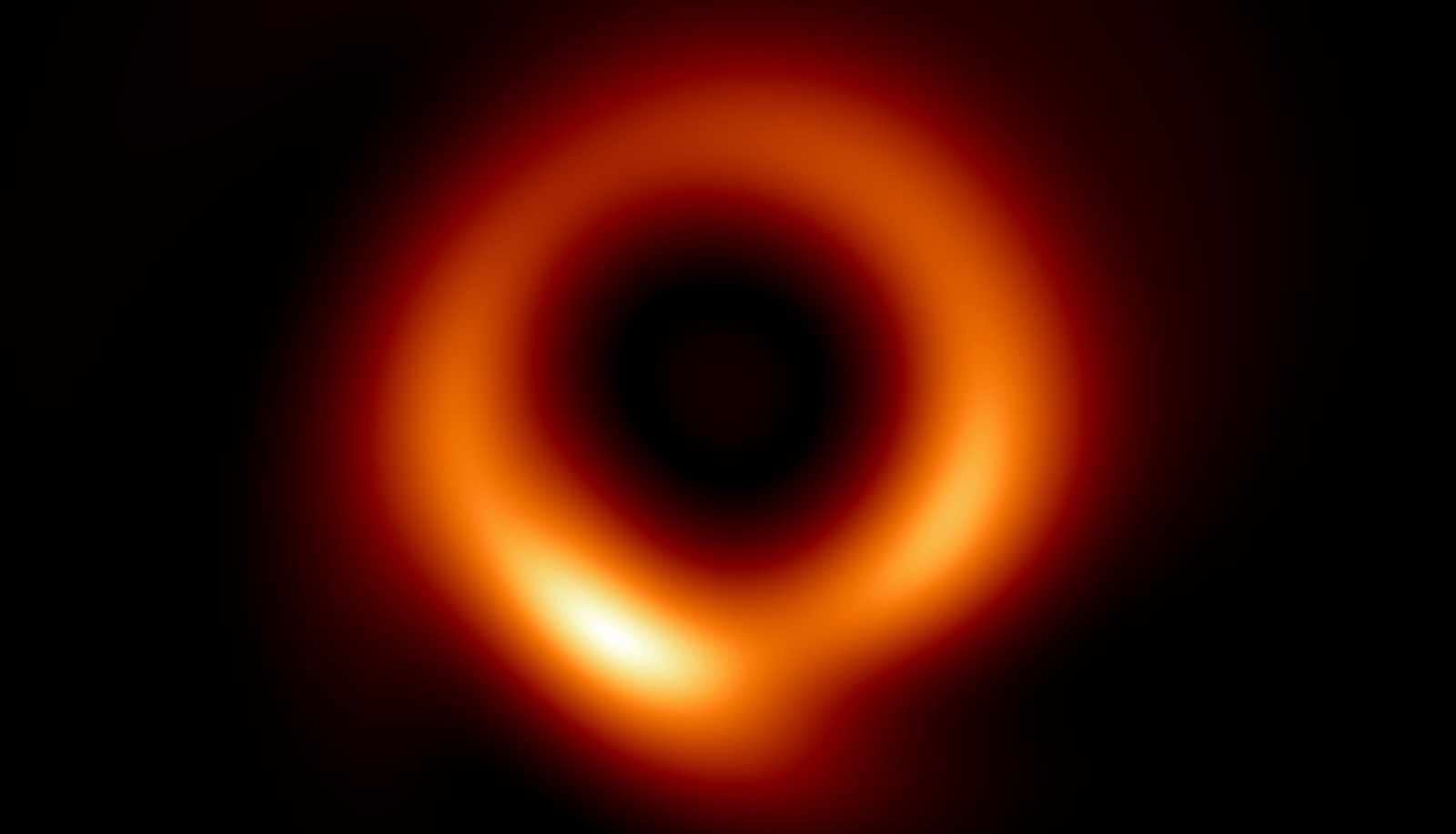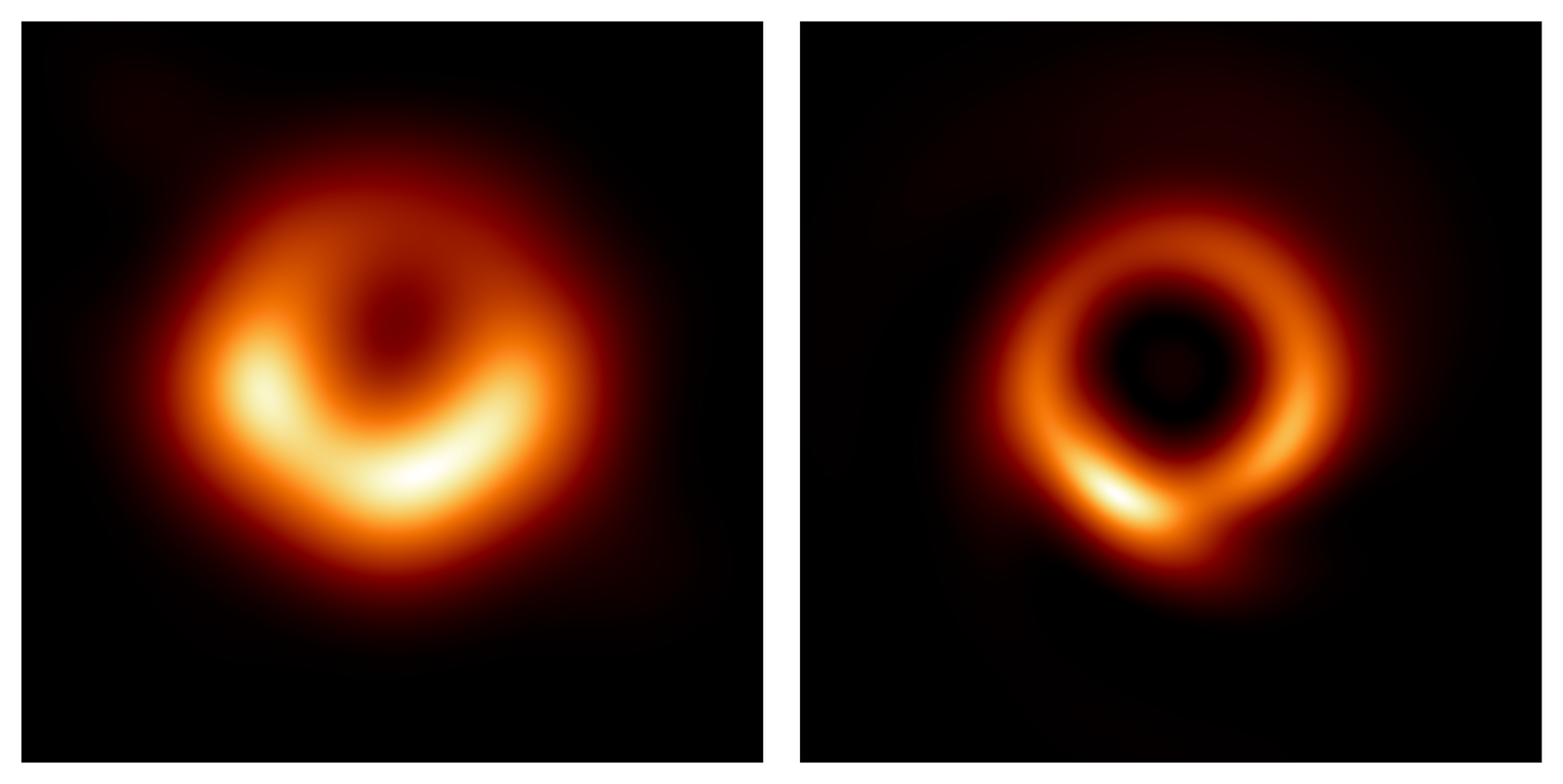First-ever close-up of a supermassive black hole sharpened to 'full resolution' by AI, and the results are stunning
Astronomers have used machine learning to sharpen the 2019 Event Horizon Telescope image of the black hole M87*, the first direct image of a black hole ever taken.

The first-ever photo of a supermassive black hole has gotten a "maximum resolution" makeover, thanks to artificial intelligence (AI).
The iconic 2019 image of M87*, a solar system-size black hole in the center of the Virgo galaxy cluster, was made by pooling radio light that had traveled to us across 53 million light-years of space.
Now, a new effort has used machine learning to clean the image, sharpening it to achieve the fullest resolution possible and exposing a larger and darker central region surrounded by glowing gas that astronomers have described as a "skinny donut." The researchers published the updated image April 13 in The Astrophysical Journal Letters.
"With our new machine learning technique, PRIMO, we were able to achieve the maximum resolution of the current [telescope] array," lead author Lia Medeiros, an astronomer at the Institute for Advanced Study in Princeton, New Jersey, said in a statement. "Since we cannot study black holes up-close, the detail of an image plays a critical role in our ability to understand its behavior. The width of the ring in the image is now smaller by about a factor of two, which will be a powerful constraint for our theoretical models and tests of gravity."
The Messier 87 black hole, which is as wide as our solar system and 6.5 billion times the mass of the sun, was imaged by the Event Horizon Telescope (EHT), an array of eight globally synchronized radio telescopes. Black holes have such a powerful gravitational pull that nothing (not even light) can escape their maws, but this doesn't mean they can't be seen. This is because active black holes are surrounded by accretion disks — vast rings of material stripped from gas clouds and stars orbiting the black holes' event horizons — that get heated to red-hot temperatures by friction, producing a faint-yet-detectable glow.

It is from these faint radio glimmers that astronomers were able to reconstruct the distant singularity as a doughnut hole surrounded by a halo of light. But gaps in the data, arising from missing jigsaw pieces of light where no radio telescope was there to receive it, left the image fuzzy and ill-defined.
Get the world’s most fascinating discoveries delivered straight to your inbox.
To sharpen the picture, the researchers turned to a new AI technique called principal-component interferometric modeling (PRIMO), which analyzed more than 30,000 high-fidelity simulated images of black hole gas accretions to find common patterns. These patterns were then sorted by how commonly they occurred before being blended together and applied to the original image to produce a sharper estimate.
By checking the newly rendered image with EHT data and the theory on what the black hole should look like, the researchers confirmed that their image was a very close approximation of the real thing. This obviously required the big assumption that the black hole will look like we expect it to, but the researchers said the 2019 image already confirmed theoretical predictions of its broad details. This new image will enable even closer study of the extreme effects produced by the cosmic sinkholes, where our theories of gravity and quantum mechanics break down and merge, the team added.
"The 2019 image was just the beginning," Medeiros said. "If a picture is worth a thousand words, the data underlying that image have many more stories to tell. PRIMO will continue to be a critical tool in extracting such insights."

Ben Turner is a U.K. based writer and editor at Live Science. He covers physics and astronomy, tech and climate change. He graduated from University College London with a degree in particle physics before training as a journalist. When he's not writing, Ben enjoys reading literature, playing the guitar and embarrassing himself with chess.


